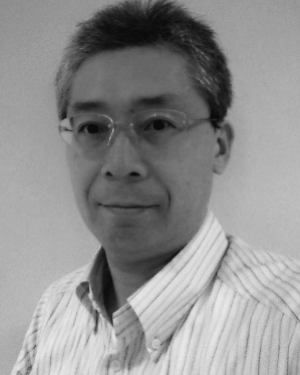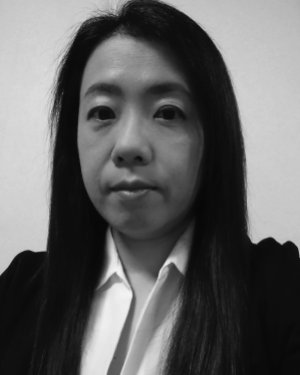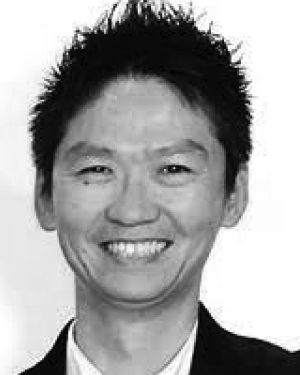0 seconds of 0 secondsVolume 90%
Press shift question mark to access a list of keyboard shortcuts
Keyboard Shortcuts
Play/PauseSPACE
Increase Volume↑
Decrease Volume↓
Seek Forward→
Seek Backward←
Captions On/Offc
Fullscreen/Exit Fullscreenf
Mute/Unmutem
Seek %0-9
Live
00:00
00:00
00:00
Enhanced method adaptively adjusts the sensor's inspection radius |Oq| and distance dinsp' according to the inevitable position and orientation errors in UAV inspection t...
Abstract:
We implemented and evaluated our previous path planning method for inspection using unmanned aerial vehicles (UAVs) in real-world, and identified its shortcomings in hand...Show MoreMetadata
Abstract:
We implemented and evaluated our previous path planning method for inspection using unmanned aerial vehicles (UAVs) in real-world, and identified its shortcomings in handling positioning errors. Then, we proposed an enhanced method to address this problem. The previous method theoretically guaranteed complete coverage of targets and data quality. However, we verified it in bridge inspection experiments and found that the former has not been ensured. The crucial factors of data omission are clarified as the errors in UAV positioning. Our previous method relies on appropriately setting ideal allowances to counteract positioning errors, which is challenging in practice. Therefore, we proposed an enhanced path planning method, which adaptively adjusts allowances according to positioning error to prevent omission while minimizing waypoints. In the simulation including positioning disturbances, the enhanced method consistently achieved full coverage in 1000 times simulation with over 28% waypoints less than the previous one.
0 seconds of 0 secondsVolume 90%
Press shift question mark to access a list of keyboard shortcuts
Keyboard Shortcuts
Play/PauseSPACE
Increase Volume↑
Decrease Volume↓
Seek Forward→
Seek Backward←
Captions On/Offc
Fullscreen/Exit Fullscreenf
Mute/Unmutem
Seek %0-9
Live
00:00
00:00
00:00
Enhanced method adaptively adjusts the sensor's inspection radius |Oq| and distance dinsp' according to the inevitable position and orientation errors in UAV inspection t...
Published in: IEEE Access ( Volume: 12)
Funding Agency:

Department of Electrical Engineering and Computer Science, Graduate School of Engineering, Nagoya University, Nagoya, Aichi, Japan
Weitong Wu received the B.E. degree from the School of Automation and Electrical Engineering, University of Science and Technology Beijing (USTB), China, in 2018, and the M.E. degree from the Department of Electrical Engineering, Electronics, and Information, Nagoya University (NU), Japan, in 2021, where he is currently pursuing the Ph.D. degree. His research interests include robot decision planning, path planning, intel...Show More
Weitong Wu received the B.E. degree from the School of Automation and Electrical Engineering, University of Science and Technology Beijing (USTB), China, in 2018, and the M.E. degree from the Department of Electrical Engineering, Electronics, and Information, Nagoya University (NU), Japan, in 2021, where he is currently pursuing the Ph.D. degree. His research interests include robot decision planning, path planning, intel...View more

Department of Electrical Engineering and Computer Science, Graduate School of Engineering, Nagoya University, Nagoya, Aichi, Japan
Yuki Funabora (Member, IEEE) received the B.E., M.E., and Ph.D. degrees in electrical engineering and computer science from Nagoya University (NU), Japan, in 2007, 2009, and 2012, respectively. In 2012, he was a Postdoctoral Researcher with the RIKEN Advanced Science Institute. Since 2021, he has been an Associate Professor with NU. His research interests include human-cooperative robots, soft robotics, intelligent contro...Show More
Yuki Funabora (Member, IEEE) received the B.E., M.E., and Ph.D. degrees in electrical engineering and computer science from Nagoya University (NU), Japan, in 2007, 2009, and 2012, respectively. In 2012, he was a Postdoctoral Researcher with the RIKEN Advanced Science Institute. Since 2021, he has been an Associate Professor with NU. His research interests include human-cooperative robots, soft robotics, intelligent contro...View more

Department of Electrical Engineering and Computer Science, Graduate School of Engineering, Nagoya University, Nagoya, Aichi, Japan
Shinji Doki (Senior Member, IEEE) received the B.E., M.E., and Ph.D. degrees in electronic-mechanical engineering from Nagoya University (NU), Japan, in 1990, 1992, and 1995, respectively. Since 2012, he has been a Professor with NU. His research interests include control, modeling, and signal/information processing and its application for motor drive systems. He was a recipient of the IEEE IECON ‘92 Best Paper Award and ...Show More
Shinji Doki (Senior Member, IEEE) received the B.E., M.E., and Ph.D. degrees in electronic-mechanical engineering from Nagoya University (NU), Japan, in 1990, 1992, and 1995, respectively. Since 2012, he has been a Professor with NU. His research interests include control, modeling, and signal/information processing and its application for motor drive systems. He was a recipient of the IEEE IECON ‘92 Best Paper Award and ...View more

Department of Electrical and Electronics Engineering, Aichi Institute of Technology, Nagoya, Aichi, Japan
Kae Doki (Member, IEEE) received the Ph.D. degree in electrical and electronic engineering from the Graduate School of Engineering, Nagoya University, in 2002. In April 2002, she became an Assistant Researcher with the Department of Electrical Engineering, Faculty of Engineering, Aichi Institute of Technology. After working as a Lecturer, she became an Associate Professor with the Department of Mechanical Engineering, Aic...Show More
Kae Doki (Member, IEEE) received the Ph.D. degree in electrical and electronic engineering from the Graduate School of Engineering, Nagoya University, in 2002. In April 2002, she became an Assistant Researcher with the Department of Electrical Engineering, Faculty of Engineering, Aichi Institute of Technology. After working as a Lecturer, she became an Associate Professor with the Department of Mechanical Engineering, Aic...View more

SOKEN INC., Nisshin, Aichi, Japan
Satoru Yoshikawa received the M.S. degree from the Graduate School of Frontier Sciences, The University of Tokyo, in 2009. In 2009, he joined DENSO Corporation. He has been engaged in research and development of power conversion control for in-vehicle chargers, motion control for robots and UAVs, and image analysis AI.
Satoru Yoshikawa received the M.S. degree from the Graduate School of Frontier Sciences, The University of Tokyo, in 2009. In 2009, he joined DENSO Corporation. He has been engaged in research and development of power conversion control for in-vehicle chargers, motion control for robots and UAVs, and image analysis AI.View more

DENSO Corporation, Kariya, Aichi, Japan
Tetsuji Mitsuda received the M.S. degree in mechanical engineering from the Nagoya Institute of Technology, in 2004. In 2004, he joined DENSO Corporation. After working on the development of automobile engine control systems, he is currently engaged in the development of digital twin systems utilizing robots and AI.
Tetsuji Mitsuda received the M.S. degree in mechanical engineering from the Nagoya Institute of Technology, in 2004. In 2004, he joined DENSO Corporation. After working on the development of automobile engine control systems, he is currently engaged in the development of digital twin systems utilizing robots and AI.View more

SOKEN INC., Nisshin, Aichi, Japan
Jingyu Xiang was born in Shanghai, China, in 1985. He received the B.S., M.S., and Ph.D. degrees in mechanical science and engineering from Nagoya University, Nagoya, Japan, in 2008, 2010, and 2014, respectively. From 2013 to 2014, he was a Visiting Researcher with the Clemson University International Center for Automotive Research. Since 2014, he joined SOKEN Inc. His research interests include autonomous driving, autono...Show More
Jingyu Xiang was born in Shanghai, China, in 1985. He received the B.S., M.S., and Ph.D. degrees in mechanical science and engineering from Nagoya University, Nagoya, Japan, in 2008, 2010, and 2014, respectively. From 2013 to 2014, he was a Visiting Researcher with the Clemson University International Center for Automotive Research. Since 2014, he joined SOKEN Inc. His research interests include autonomous driving, autono...View more

Department of Electrical Engineering and Computer Science, Graduate School of Engineering, Nagoya University, Nagoya, Aichi, Japan
Weitong Wu received the B.E. degree from the School of Automation and Electrical Engineering, University of Science and Technology Beijing (USTB), China, in 2018, and the M.E. degree from the Department of Electrical Engineering, Electronics, and Information, Nagoya University (NU), Japan, in 2021, where he is currently pursuing the Ph.D. degree. His research interests include robot decision planning, path planning, intelligent control systems, modeling, and optimization.
Weitong Wu received the B.E. degree from the School of Automation and Electrical Engineering, University of Science and Technology Beijing (USTB), China, in 2018, and the M.E. degree from the Department of Electrical Engineering, Electronics, and Information, Nagoya University (NU), Japan, in 2021, where he is currently pursuing the Ph.D. degree. His research interests include robot decision planning, path planning, intelligent control systems, modeling, and optimization.View more

Department of Electrical Engineering and Computer Science, Graduate School of Engineering, Nagoya University, Nagoya, Aichi, Japan
Yuki Funabora (Member, IEEE) received the B.E., M.E., and Ph.D. degrees in electrical engineering and computer science from Nagoya University (NU), Japan, in 2007, 2009, and 2012, respectively. In 2012, he was a Postdoctoral Researcher with the RIKEN Advanced Science Institute. Since 2021, he has been an Associate Professor with NU. His research interests include human-cooperative robots, soft robotics, intelligent control, soft computing, and system design.
Yuki Funabora (Member, IEEE) received the B.E., M.E., and Ph.D. degrees in electrical engineering and computer science from Nagoya University (NU), Japan, in 2007, 2009, and 2012, respectively. In 2012, he was a Postdoctoral Researcher with the RIKEN Advanced Science Institute. Since 2021, he has been an Associate Professor with NU. His research interests include human-cooperative robots, soft robotics, intelligent control, soft computing, and system design.View more

Department of Electrical Engineering and Computer Science, Graduate School of Engineering, Nagoya University, Nagoya, Aichi, Japan
Shinji Doki (Senior Member, IEEE) received the B.E., M.E., and Ph.D. degrees in electronic-mechanical engineering from Nagoya University (NU), Japan, in 1990, 1992, and 1995, respectively. Since 2012, he has been a Professor with NU. His research interests include control, modeling, and signal/information processing and its application for motor drive systems. He was a recipient of the IEEE IECON ‘92 Best Paper Award and the paper awards from FANUC FA and Robot Foundation and the Institute of Electrical Engineers of Japan.
Shinji Doki (Senior Member, IEEE) received the B.E., M.E., and Ph.D. degrees in electronic-mechanical engineering from Nagoya University (NU), Japan, in 1990, 1992, and 1995, respectively. Since 2012, he has been a Professor with NU. His research interests include control, modeling, and signal/information processing and its application for motor drive systems. He was a recipient of the IEEE IECON ‘92 Best Paper Award and the paper awards from FANUC FA and Robot Foundation and the Institute of Electrical Engineers of Japan.View more

Department of Electrical and Electronics Engineering, Aichi Institute of Technology, Nagoya, Aichi, Japan
Kae Doki (Member, IEEE) received the Ph.D. degree in electrical and electronic engineering from the Graduate School of Engineering, Nagoya University, in 2002. In April 2002, she became an Assistant Researcher with the Department of Electrical Engineering, Faculty of Engineering, Aichi Institute of Technology. After working as a Lecturer, she became an Associate Professor with the Department of Mechanical Engineering, Aichi Institute of Technology, in 2007, and an Associate Professor and a Professor with the Department of Electrical Engineering, Aichi Institute of Technology, in 2012 and 2020, respectively. Her research interests include robotics, intelligent control systems, and intelligent information processing. She is a member of the Robotics Society of Japan, the Society of Instrument and Control Engineers, and the Institute of Electrical Engineers of Japan.
Kae Doki (Member, IEEE) received the Ph.D. degree in electrical and electronic engineering from the Graduate School of Engineering, Nagoya University, in 2002. In April 2002, she became an Assistant Researcher with the Department of Electrical Engineering, Faculty of Engineering, Aichi Institute of Technology. After working as a Lecturer, she became an Associate Professor with the Department of Mechanical Engineering, Aichi Institute of Technology, in 2007, and an Associate Professor and a Professor with the Department of Electrical Engineering, Aichi Institute of Technology, in 2012 and 2020, respectively. Her research interests include robotics, intelligent control systems, and intelligent information processing. She is a member of the Robotics Society of Japan, the Society of Instrument and Control Engineers, and the Institute of Electrical Engineers of Japan.View more

SOKEN INC., Nisshin, Aichi, Japan
Satoru Yoshikawa received the M.S. degree from the Graduate School of Frontier Sciences, The University of Tokyo, in 2009. In 2009, he joined DENSO Corporation. He has been engaged in research and development of power conversion control for in-vehicle chargers, motion control for robots and UAVs, and image analysis AI.
Satoru Yoshikawa received the M.S. degree from the Graduate School of Frontier Sciences, The University of Tokyo, in 2009. In 2009, he joined DENSO Corporation. He has been engaged in research and development of power conversion control for in-vehicle chargers, motion control for robots and UAVs, and image analysis AI.View more

DENSO Corporation, Kariya, Aichi, Japan
Tetsuji Mitsuda received the M.S. degree in mechanical engineering from the Nagoya Institute of Technology, in 2004. In 2004, he joined DENSO Corporation. After working on the development of automobile engine control systems, he is currently engaged in the development of digital twin systems utilizing robots and AI.
Tetsuji Mitsuda received the M.S. degree in mechanical engineering from the Nagoya Institute of Technology, in 2004. In 2004, he joined DENSO Corporation. After working on the development of automobile engine control systems, he is currently engaged in the development of digital twin systems utilizing robots and AI.View more

SOKEN INC., Nisshin, Aichi, Japan
Jingyu Xiang was born in Shanghai, China, in 1985. He received the B.S., M.S., and Ph.D. degrees in mechanical science and engineering from Nagoya University, Nagoya, Japan, in 2008, 2010, and 2014, respectively. From 2013 to 2014, he was a Visiting Researcher with the Clemson University International Center for Automotive Research. Since 2014, he joined SOKEN Inc. His research interests include autonomous driving, autonomous mobile robots, 3D modeling, and cyber physical system (CPS).
Jingyu Xiang was born in Shanghai, China, in 1985. He received the B.S., M.S., and Ph.D. degrees in mechanical science and engineering from Nagoya University, Nagoya, Japan, in 2008, 2010, and 2014, respectively. From 2013 to 2014, he was a Visiting Researcher with the Clemson University International Center for Automotive Research. Since 2014, he joined SOKEN Inc. His research interests include autonomous driving, autonomous mobile robots, 3D modeling, and cyber physical system (CPS).View more

